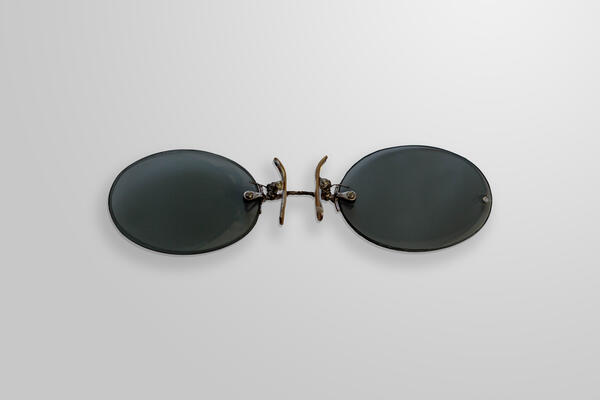The exhibit with oval smoke-colored lenses is stored in a black oval case.
The word pince-nez comes from the French pincer — “pinch” and nez — “nose”. Oval-shaped glasses held on a person’s nose by a metal spring rather than by earpieces appeared in the 16th century, but gained popularity in the second half of the 19th century. The pince-nez are designed in such a way that the lenses are held in the desired position by means of fasteners, springs and clips on the bridge of the nose. The use of new materials, in particular spring steel, made it possible to create pince-nez models that were lightweight and at the same time sat quite firmly on the nose. In addition to metals, rubber, celluloid, and bone were used in the manufacture of pince-nez. At first, the rims for lenses of the pince-nez were round in shape. Subsequently, many other shapes were available, including oval rims. In the 1910s, rimless pince-nez became fashionable.
To prevent pince-nez from falling and breaking,
they were worn on a chain or cord, which at the other end had either a hook for
fixing behind the ear, or a pin for attaching to clothes. Opticians offered
models for nose bridges of various lengths. However, each pair had to be
customized for the client, and the pince-nez required repair and maintenance.
Even a professional magazine joked about it,



